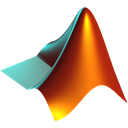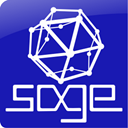Top R (programming language) Alternatives for Data Science & Statistical Computing
R is a powerful, free software environment renowned for statistical computing and graphics. As a de facto standard for data analysis and data mining, it offers immense power to advanced users. However, for various reasons—be it specific feature needs, a desire for different syntax, or integration with other ecosystems—many seek a robust R (programming language) alternative. This article explores some of the best replacements that offer similar or complementary functionalities for your data endeavors.
Best R (programming language) Alternatives
If you're looking to expand your toolkit beyond R or find a more suitable environment for your specific projects, these alternatives offer diverse strengths in statistical analysis, data manipulation, and scientific computing.

Python
Python is an incredibly versatile, interpreted, object-oriented, and extensible programming language. It stands as a top R (programming language) alternative due to its extraordinary combination of clarity and versatility, and its vast ecosystem of libraries like Pandas, NumPy, and Scikit-learn for data science. Python is free and open-source, available across multiple platforms including Mac, Windows, Linux, and more. Key features include its high-level nature, object-oriented design, dynamic typing, and a robust modular system, making it ideal for everything from web development to machine learning.

GNU Octave
GNU Octave is a free and open-source computer program primarily for numerical computations, offering high compatibility with MATLAB. It serves as an excellent R (programming language) alternative for users who are comfortable with matrix-based programming and need a powerful, free tool for numerical analysis. Available on Mac, Windows, Linux, and BSD, Octave includes features like ANOVA testing, making it a strong contender for statistical and scientific workloads.

MATLAB
MATLAB is an enterprise-class computing environment and programming language specifically designed for numerical computation. While commercial, it's a powerful R (programming language) alternative, particularly for engineers and scientists. It runs on Mac, Windows, Linux, and even mobile platforms like Android and iPhone. MATLAB boasts features such as Simulink for model-based design, batch plotting, and an embedded debugger, providing a comprehensive environment for complex simulations and data analysis.

Sage
Sage, also known as SageMath, is a free, open-source mathematics software system licensed under the GPL. It's a compelling R (programming language) alternative because it combines the power of many existing open-source packages into a common Python-based interface. Sage is available on Mac, Windows, Linux, and as a web application. Its key feature, symbolic computation, makes it ideal for advanced mathematical operations, algebra, calculus, and more, offering a comprehensive environment for computational mathematics.

Mathematica
Mathematica is a definitive technical computing system spanning machine learning, neural networks, data science, visualizations, and much more. As a commercial R (programming language) alternative, it offers an incredibly rich set of features for complex scientific and engineering tasks. It's available on Mac, Windows, Linux, and web. Key features include symbolic computation, calculus solving, constructive geometry, equation solving, graphing calculator, and a powerful algebraic engine, making it a comprehensive tool for advanced mathematical and computational work.

SciPy & Numpy
SciPy and NumPy are open-source software packages for mathematics, science, and engineering within the Python ecosystem. Together, they form a powerful and free R (programming language) alternative for numerical computation and data analysis. Available on Mac, Windows, and Linux, these libraries provide fundamental building blocks for scientific computing in Python, including efficient array operations (NumPy) and a wide range of scientific algorithms (SciPy), making Python a formidable environment for data professionals.

Scilab
Scilab is a free and open-source scientific software package for numerical computations, providing a powerful computing environment for engineering and scientific applications. It serves as a direct R (programming language) alternative for users seeking a similar environment for numerical analysis and data visualization. Scilab is available on Mac, Windows, and Linux, offering a comprehensive set of functions for simulation, optimization, and data analysis.

Julia
Julia is a high-level, high-performance dynamic programming language specifically designed for technical computing, with syntax familiar to users of other technical computing environments. As a free and open-source R (programming language) alternative, Julia excels in speed and addresses the 'two-language problem' often found in scientific computing. It's available on Mac, Windows, and Linux, boasting features like automatic JIT compilation, parallel computing capabilities, and a powerful compiler, making it ideal for computationally intensive tasks.

PSPP
PSPP is a free and open-source software application specifically for the analysis of sampled data. It offers both a graphical user interface and a conventional command-line interface, making it a direct R (programming language) alternative for statistical analysis, particularly for those familiar with SPSS. Written in C and using GNU Scientific Library, PSPP is available on Mac, Windows, and Linux. It includes features like network analysis and graph generation, suitable for a wide range of statistical studies.

Nim (programming language)
Nim is a statically typed, imperative programming language with a powerful macro system, aiming to provide the programmer ultimate power without compromising runtime performance. While less directly a statistical package like R, Nim can serve as a robust R (programming language) alternative for those building high-performance data processing tools or custom numerical algorithms. It is free and open-source, available on Mac, Windows, Linux, and BSD. Key features include its compiled nature, cross-platform compatibility, object-oriented capabilities, and a Lisp-like macro system for advanced metaprogramming.
Each of these R (programming language) alternatives offers unique strengths, catering to different needs in the vast landscape of data science and statistical computing. Whether you prioritize open-source solutions, specific functionalities, or integration with particular ecosystems, exploring these options will help you find the best fit for your projects and workflow.